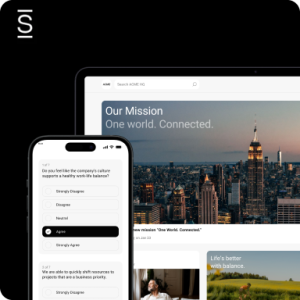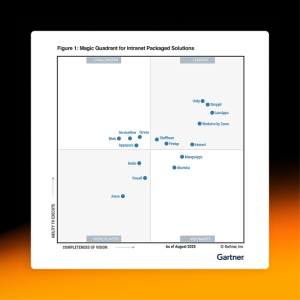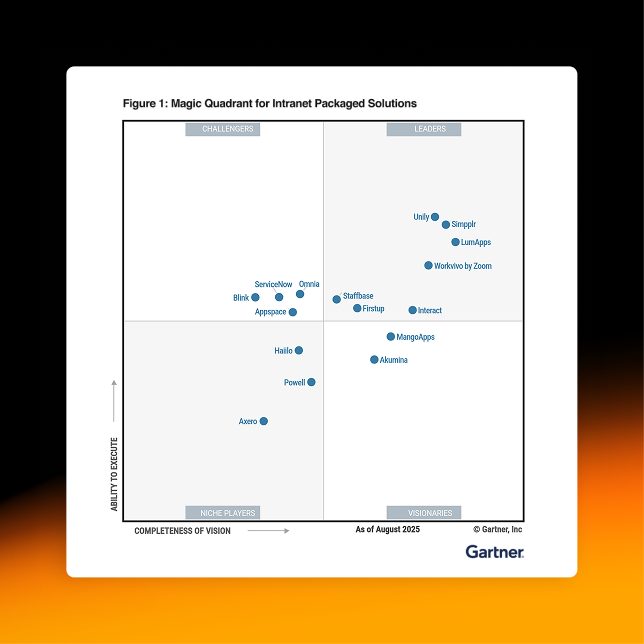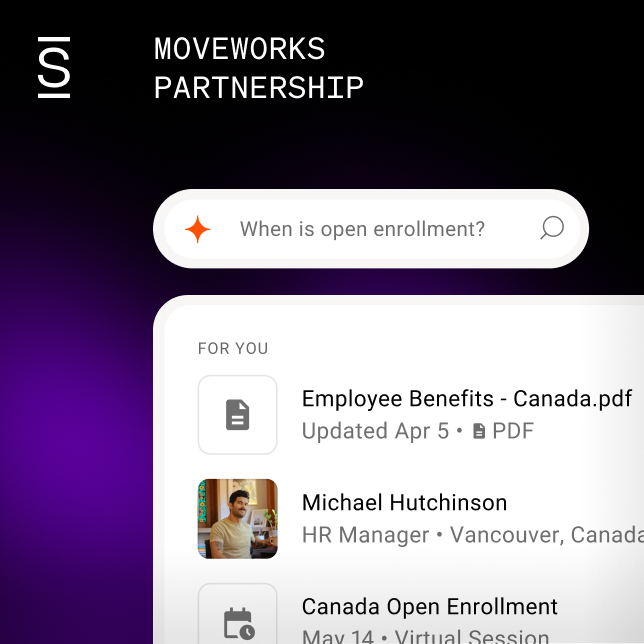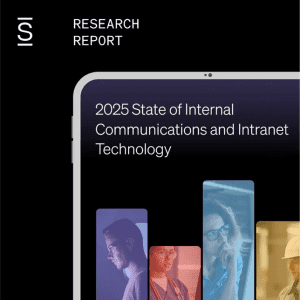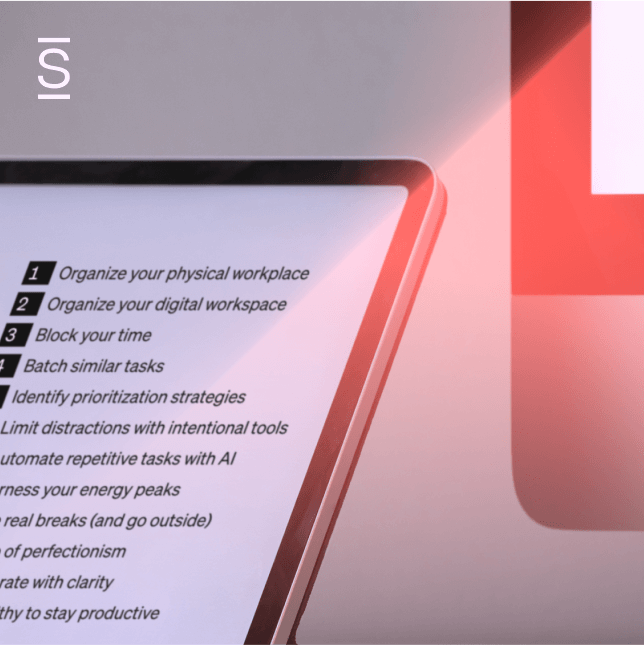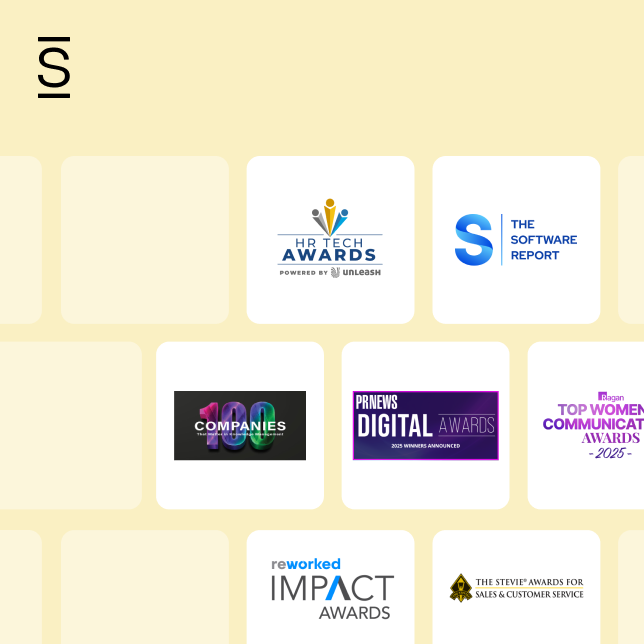This article was originally published May 04, 2023, and updated on March 15, 2025.

12 innovative employee recognition and rewards ideas to boost engagement
Refreshing and revamping your employee recognition and rewards program is essential for workplace success. In today’s competitive job market, attracting and retaining top talent requires more than just competitive salaries — establishing a culture of appreciation will set your organization apart.
Companies that invest in meaningful recognition build more than goodwill — they create measurable returns in reduced turnover costs, increased productivity and stronger talent acquisition. Many employers miss this opportunity by implementing generic employee recognition tactics that fail to connect with their workforce. The result? Wasted resources on programs that employees don’t value.
Consistent, specific appreciation boosts morale, productivity and retention (Harvard Business Review).
A thoughtful employee recognition and rewards program helps create a positive company culture and fosters engagement, motivation and company loyalty. Below, we explore innovative ways to recognize your employees and make appreciation a cornerstone of your organization.
What is an employee recognition and rewards program?

Effective employee recognition programs highlight and acknowledge performance and achievements that align with organizational goals and values. These range from structured initiatives with predetermined criteria to spontaneous acknowledgments in the daily workflow.
Beyond work anniversaries, companies recognize employees for exceeding goals, demonstrating innovation, securing new business, mentoring colleagues, improving processes and exemplifying company values during challenges.
Formal recognition includes:
- Quarterly awards
- Performance bonuses
- Milestone celebrations
Informal recognition includes:
- Peer shout-outs
- Manager acknowledgment
- Personalized thank-you notes
Formal recognition often comes with companywide visibility, whereas informal recognition is often part of the day-to-day experience. Effective programs blend both approaches while considering generational and cultural differences in what employees value.

Why recognition and rewards matter
Employee recognition and rewards programs deliver measurable returns that directly impact a company’s bottom line. While the initial investment may seem like a “nice to have” rather than a necessity, data consistently shows that skipping employee recognition creates hidden costs in turnover, recruitment expenses and lost productivity.
66% of employees say they would leave their job if they didn’t feel appreciated (Forbes).
In competitive industries where talent is scarce, these programs become even more crucial as differentiators that help companies secure and keep their best performers.
A well-designed employee recognition program can:
- Boost engagement: Acknowledged employees invest more discretionary effort in projects and collaborate more effectively with colleagues.
- Increase retention: Companies with strong recognition practices experience significantly lower voluntary turnover, avoiding costly replacement cycles.
- Strengthen company culture: Regular acknowledgment reinforces core values and creates positive behavioral patterns that spread throughout the organization.
- Attract top talent: Candidates actively research company culture during job searches, with recognition practices increasingly influencing employment decisions.
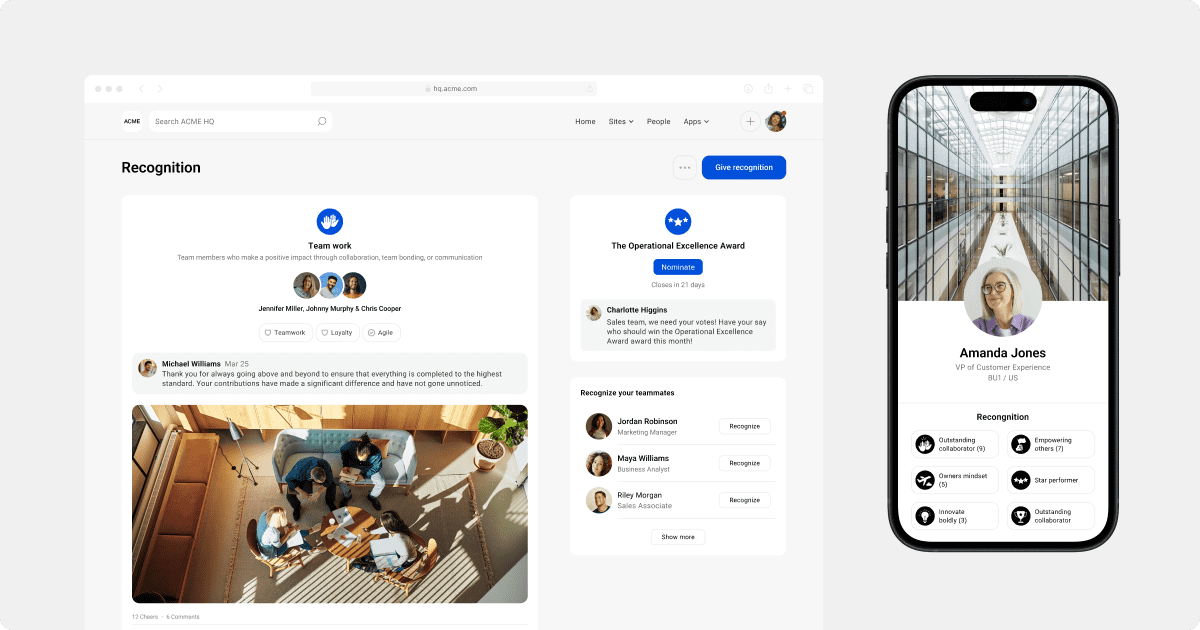
12 ideas for an effective employee recognition and rewards program

Designing an impactful recognition program means going beyond the basics. Let’s explore 12 modern, engaging employee recognition and rewards ideas for not only Employee Appreciation Day but all month long.
1. Personalized employee rewards
Rather than a generic gift card, add a personalized twist to employee-of-the-month rewards based on their interests — concert tickets, a favorite restaurant voucher, or an experience like a cooking class. Better yet, let them choose their employee reward for maximum impact.
2. Make recognition visible and social
Recognition should be seamlessly integrated into employees’ daily workflows, not just in chat or email. Employee experience platforms like Simpplr make employee recognition interactive, real-time and accessible to everyone. This visibility takes recognition out of private messages and makes it an engaging part of company culture.
3. Surprise recognition moments
Recognition doesn’t have to be scheduled. Surprise your team with spontaneous thank-you messages, gift cards or team lunches to acknowledge hard work. Recognition and rewards platforms enhance engagement by letting employees earn redeemable points, adding a fun monetary incentive without feeling transactional.
4. Appreciation spotlights
Celebrate work anniversaries, project completions and personal achievements — like running a marathon — by showcasing them in companywide digital town halls, internal newsletters or social media. This visibility connects employees across departments, fostering a sense of shared success and strengthening company culture.
5. Social media spotlights
Celebrate employees with your company’s LinkedIn, Instagram or newsletter, highlighting their contributions with personal stories and accomplishments. Consult with your social media team, and identify ways to expand this concept with interactive elements, such as employee takeovers where team members share their daily experiences.
6. Flexible work perks
Employee rewards don’t always mean money. Acknowledge hard work by offering summer Fridays, additional paid time off, or remote work days that give employees what they truly value — time. These flexibility perks often create more lasting appreciation than traditional cash bonuses.
7. Experience-based rewards
Give employees the gift of lasting memories with weekend getaways, spa days or tickets to events they love. These experience-based employee rewards create positive associations with your company that persist long after a cash bonus would be spent and forgotten.
8. Wellness-focused rewards
Support employee well-being through rewards like gym memberships, workout subscriptions, studio certificates, ergonomic accessories or meditation app subscriptions. These employee rewards show you care about their long-term health while providing benefits they might not purchase for themselves.
9. Curated swag bags and gifts
Elevate corporate swag by curating customized items that align with employees’ individual interests. Offer high-quality, thoughtful items like premium coffee blends for caffeine enthusiasts or sustainable products for environmentally conscious team members. These personalized touches transform standard corporate gifts into meaningful tokens of appreciation.
10. Annual employee appreciation event
Host a yearly celebration featuring awards, prizes and activities that bring employees together to recognize achievements. Incorporate team-building challenges, live entertainment or themed celebrations to create a memorable experience. The best appreciation events combine recognition with opportunities for connection, so employees feel both valued and part of something special.
11. Professional development perks
Invest in career growth by offering development opportunities tailored to individual aspirations. Provide learning stipends, access to industry conferences, leadership coaching or personalized mentorship programs. By supporting professional advancement, you demonstrate commitment to your employees’ futures while strengthening your organization’s talent pool.
12. Team-building recognition trips
Reward high-performing teams with shared experiences like offsite retreats, collaborative challenges or outdoor adventures that strengthen bonds and boost morale. Add an element of choice by letting teams vote on their reward experience, ensuring maximum engagement and appreciation from every participant.
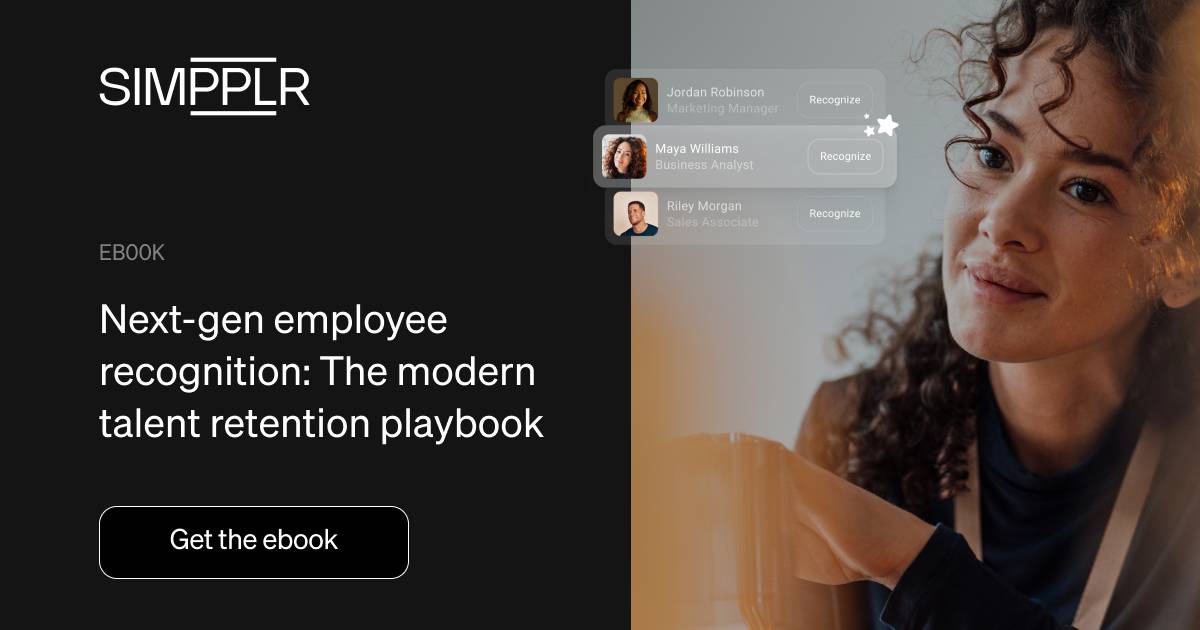
Tips for an effective recognition and rewards strategy
Good ideas don’t work without good follow-through. To build a recognition program that lasts, you need both smart planning and daily commitment from managers and team members alike.
- Make it a habit: Regular recognition is more impactful than one-off events.
- Be specific and personal: Generic praise is forgettable — tailor recognition to highlight specific achievements.
- Encourage participation: Involve employees in recognizing peers to create a culture of appreciation.
- Ensure inclusivity: Recognition should be accessible to all roles and departments.
By embedding recognition into your company culture, you create an engaged, motivated workforce that feels valued every day — not just on Employee Appreciation Day. This ongoing appreciation builds stronger teams, improves retention and delivers better business results than isolated recognition efforts.
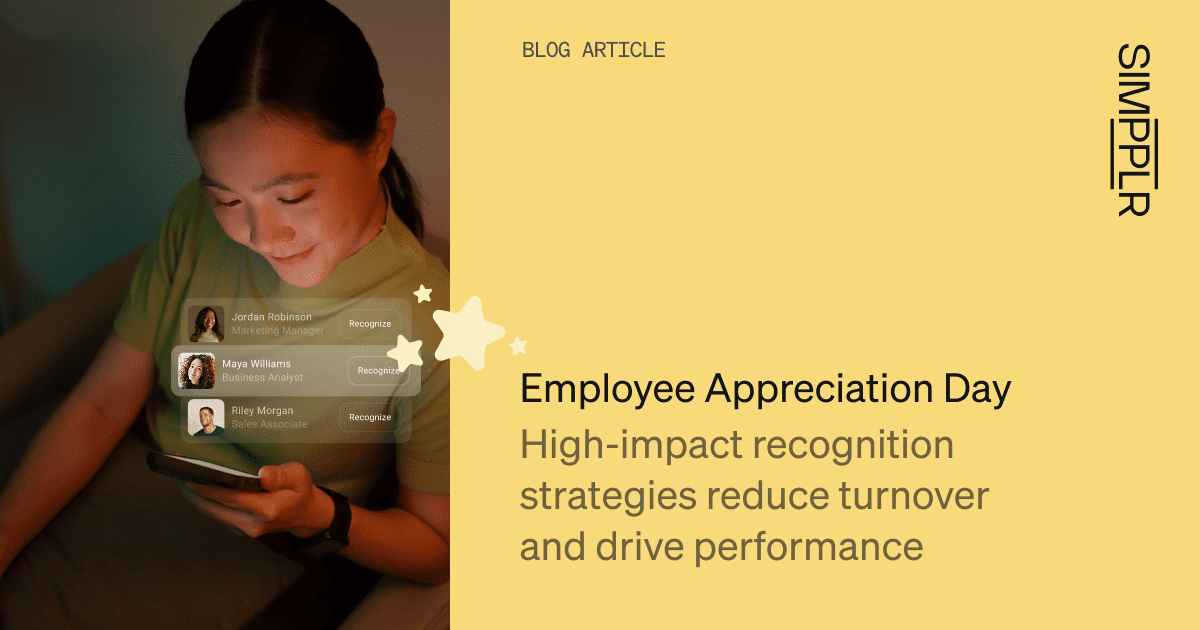
Make recognition meaningful with Simpplr
Too often, employee recognition becomes another task buried in managers’ overflowing to-do lists. Simpplr changes that equation by putting recognition where work actually happens.
Instead of yet another platform for employees to check, Simpplr integrates recognition and rewards directly into your digital workplace. Employees can spotlight colleagues during their normal workflow — no extra steps, no separate logins. The result? Recognition that happens in the moment, not weeks later when the impact has faded.
Public recognition feeds turn individual acknowledgments into community celebrations, while analytics help leaders identify recognition patterns and gaps. This approach changes appreciation from a sporadic event into a measurable, strategic advantage for organizations serious about retention.
Want to elevate your employee recognition strategy? Request a demo today to explore how Simpplr can help build a culture of appreciation.
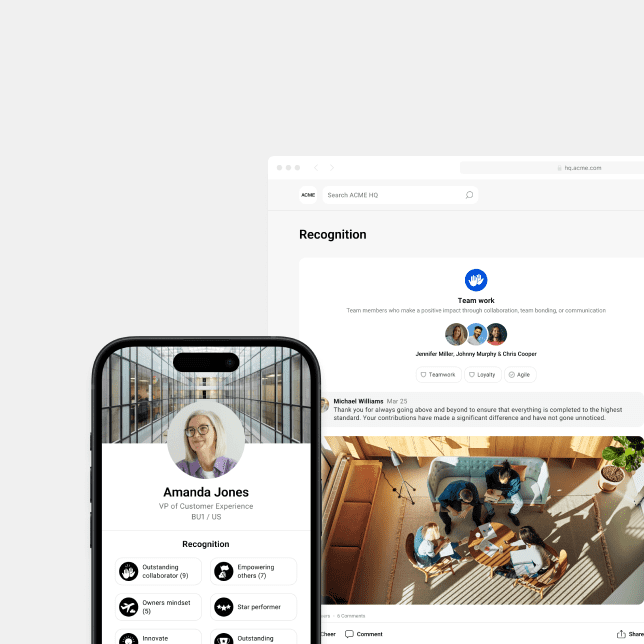
Watch a 2-minute demo
Integrate employee recognition and rewards within your intranet, maximizing participation and aligning incentives.
- Empower employees to celebrate each other’s wins
- Offer a variety of redemption options with a rewards store


